I have often heard that the first arrow is the only one that counts, because few hunters get a second shot. If you subscribe to that notion, it might be due to the way you handle your arrow while nocking. One significant advantage of traditional bows over compounds is how quietly they shoot. More than one traditional hunter has missed at close range without alerting the animal and made good on their second shot.
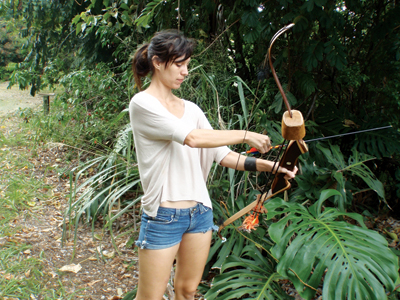
Lee Motter demonstrates a common nocking technique, which requires the archer to look at the nock.
During a recent 3-D archery shoot, I observed a new archer trying to nock an arrow. He was holding the arrow mid-shaft while attempting to align the nock with the string. After half a dozen tries, he succeeded in placing the nock of the arrow onto the bowstring.
What surprised me most was not the difficulty he had in nocking the arrow, but that their mentor stood by watching patiently while he accomplished the task. Only then did instruction begin about correctly holding the bow handle and placing the drawing fingers on the string properly.
Looking around at other archers nocking arrows, I observed two very different techniques. Many did what the new archer had attempted, handling the arrow somewhere along the shaft and then looking down at the string while successfully nocking the arrow. Occasionally, one would miss the string and succeed on the second effort. One could become reasonably proficient nocking an arrow while utilizing this technique, but I don’t believe it is the best way or the way most experienced hunters nock their arrows.
The shooters I watched who grabbed the arrow nock and placed it on the string without looking were using back quivers. I believe the popularity of bow quivers is the reason many handle arrows by the middle of the shaft these days. It is a slow way to get an arrow ready and requires looking at the string instead of where you want the next arrow to go. Having to look down breaks concentration and flow. The arrow rest on modern equipment is often not conducive to fast nocking. Many who are new to traditional bowhunting are simply accustomed to this handicap without recognizing it as such.
When I first began shooting, I wore an open side quiver. The entire fletch along with several inches of arrow was exposed above the top of the quiver. I was taught the habit of always handling the arrow by the nock when pulling the arrow from the quiver by pinching the nock between thumb and forefinger. As it was drawn I would simultaneously locate the index by feel, and align the cock feather as the arrow was placed first against the bow’s arrow rest and then onto the string.
Several years later, I watched John Schulz’s video Hitting Them Like Howard Hill. Schulz said that Hill promoted the same method that I was taught, and encouraged handling arrows by the nock. Greg Ragan referenced this method along with the John Shultz video in his article, “Hunting with a Back Quiver.” (TBM, Feb/Mar 2017.)
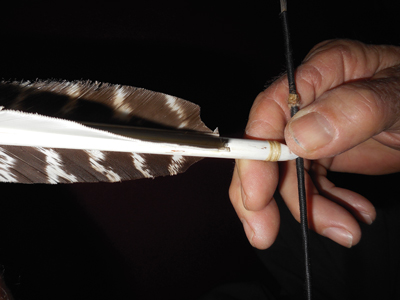
Sterling nocks under then slides his self-nock up until it is situated firmly against the nocking point.
As in many sports or activities, consistency improves performance. After using this technique for some time, you develop the ability to place an arrow on the bowstring without the need to look down at the string to watch the process. Nocking without looking can be extremely important in hunting, and when seconds matter can afford an archer a second shot.
This technique works regardless of the type of quiver used. If removal of the arrow causes the initial contact with the fingers to occur somewhere along the shaft, such as with a St. Charles style, simply allow the weight of the arrow to drop the shaft downward until the fingers slide up to the fletch, lay the shaft over the bow handle, and grasp the nock. You can easily do this without looking. If you watch old Fred Bear videos, particularly “Kaibab Bucks,” you will see him pulling the arrow from a bow quiver and laying it against the canted bow. Then, while holding it with the first finger of his bow hand, he would slide the drawing hand back to the nock. It was very smooth and effortless for him.
Back at the shoot, noting the location of the nocking point on several of the archer’s bowstrings, variety was apparent here as well. Most of the archers chose to place their arrow under their nocking point, while others placed it over. Some placed two nocking points on the string, and nocked between the two. While Howard Hill placed the arrow over his nocking point, I find placing the arrow under the nocking point desirable, because the weight of the arrow and broadhead allows gravity to aid in maintaining contact against the nocking point.
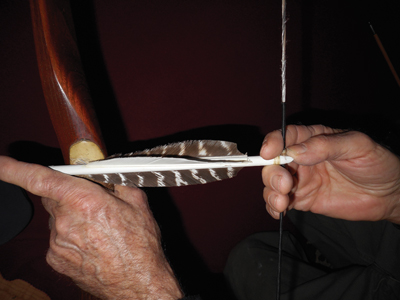
As the drawing hand pivots around the string, it automatically double checks that arrow placement is firm against the nock.
After removing an arrow from the quiver, when the hand holding the arrow’s nock contacts the bow string, either above or below the nocking point, the remaining three fingers form a curve, capturing the string. The fingers then slide slightly along the string, feel the nocking point, and place the arrow on the string with the nock stopping firmly against the nocking point.
The advantage of this technique becomes obvious when hunting with broadheads. It is simply dangerous to walk around in the woods with a razor sharp arrow nocked on the bowstring. Should you trip unexpectedly, the consequences could range from serious to fatal. It’s best to nock an arrow as one removes the safety on a firearm—only when you are ready to shoot or completely stationary while awaiting a shot. So, the ability to proficiently place an arrow on the string becomes paramount when one unexpectedly sights a game animal. The hunter must be able to nock an arrow quickly with a minimum of motion while maintaining visual contact with the prey.
Most of us have had the experience of watching an animal in the woods. You glance away for a moment then look back and have difficulty relocating the animal. Nocking an arrow without looking down at the string allows you to maintain that critical visual contact.
Which brings us to the second major advantage of this technique: shooting quickly. In addition to eliminating the need to look down, you also become proficient, enabling you to quickly reload. My husband, Sterling, has demonstrated the importance of a quick second arrow many times while hunting feral hogs. On one of our last hog hunts, a sounder of hogs foraging for acorns fed into range. He picked out a fat sow and let the wood fly. The wounded hog gave a dying squeal and attempted to bolt for the nearest thicket, although obviously mortally wounded.
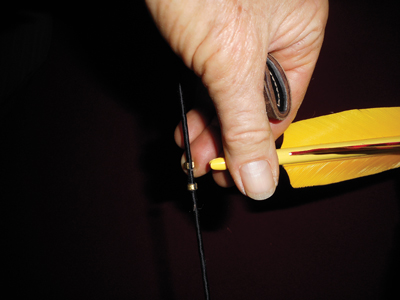
When nocking between two nocking points the middle finger locates the upper nock and the arrow is placed below it, then the drawing hand pivots around and initiates the draw.
As happens on occasion, the other animals froze for a fraction of a second attempting to determine the location of the danger. Sterling had instinctively drawn a second arrow and, seeing the first animal fall, he swung his bow arm and targeted a second hog. Both hogs fell within seconds a few dozen yards from each other, proving the effectiveness of practicing this nocking technique to proficiency. I also once watched him put three arrows in an escaping hog in a matter of seconds, assuring a quick kill. This method works if you practice it.
I’m sure there are other styles of nocking an arrow that work well, and I know that many fine archers choose to nock over the nock point on the string. Whatever technique you select, ease, consistency, and the ability to nock without looking should enhance your hunting abilities. Practice it on every shot until it becomes second nature.




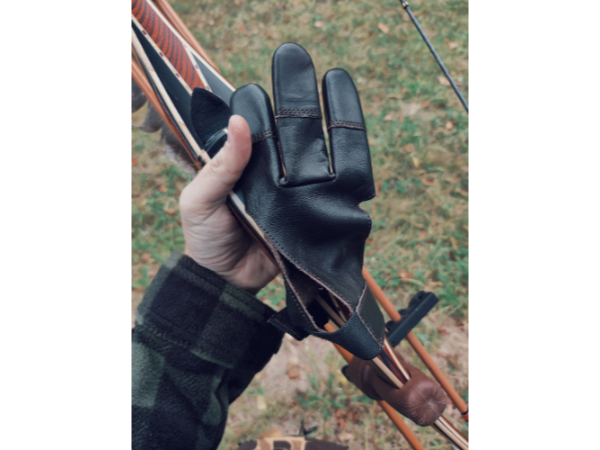


Pick a spot challenge. So true about consistently picking a spot. One shot I can see the arrow right into where I am concentrating. Next shot my eyes drop contact at release and I miss. Haven’t figured out how to stop the on again off again concentration problem.
Krista,
I couldn’t agree more! Your last line, “Practice it on every shot…”, is paramount.
No matter what style quiver or setup you use, practice “loading” every arrow as if you were in the presence of game.
Then when you are, it will pay off!
Thank you for touching on another subject that too many of us may take so for granted that we might never think to offer advice to a new shooter either!
May we all do better at that, for the benefit of the “rookie”, and the sport we hold so dear!
Much appreciated.
Kevin Brown